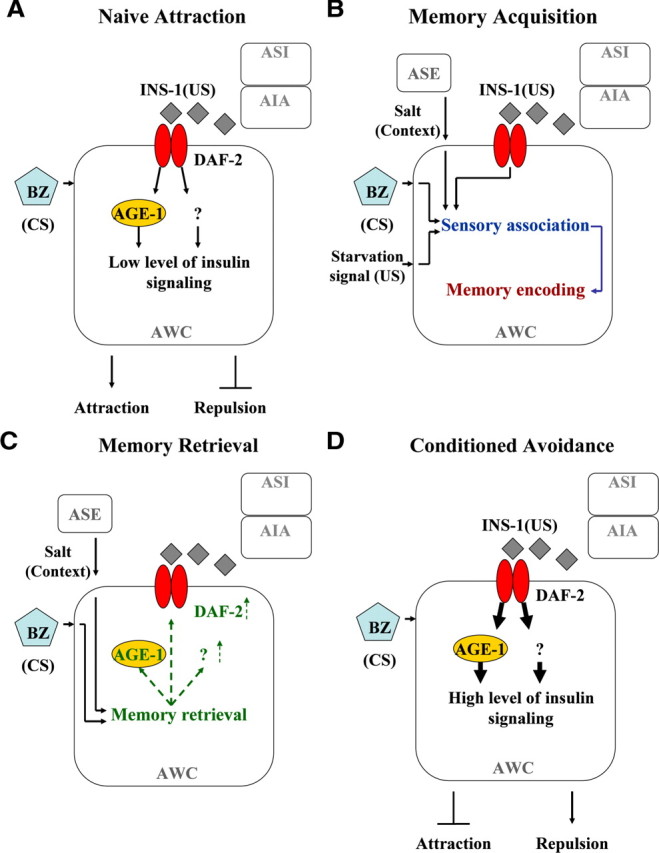Figure 6.

A working model for the regulation of benzaldehyde–starvation associative plasticity by insulin signaling in which memory is stored in the AWC. A, Benzaldehyde-sensing AWC neurons are in an attraction signaling mode under low levels of insulin signaling, thereby generating a naïve attraction response toward benzaldehyde (BZ). INS-1 is released from AIA and ASI from the synapse in the absence of food to activate insulin signaling in AWC, but the level of insulin signaling in AWC is limited either through the number of DAF-2 receptors or activity of its downstream effectors under the naive condition. B, During the memory acquisition phase, benzaldehyde-sensing AWC receives context information (i.e., presence of salt) from salt-sensing ASE and US starvation signals (i.e., INS-1 and other unknown proteins) from ASI, AIA, and other unknown neurons. Under CS benzaldehyde exposure, the CS pathways and US pathways are associated along with the context, thereby inducing molecular changes in AWC to store the associative memory. C, During the memory retrieval phase, sensation of benzaldehyde and reception of the appropriate context signal (i.e., presence of salt) in AWC leads active recall of the associative memory that subsequently leads to either an increase in the membrane integration of DAF-2 or the activity of its downstream components in AWC. D, Once the memory is retrieved, the increase in DAF-2 or the activity of its downstream effectors leads to high levels of insulin in AWC, which then suppresses the attraction signaling and promotes the repulsion signaling, thereby generating a conditioned avoidance response toward the odorant benzaldehyde.
